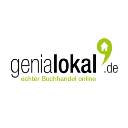Definition and Deployment of UCD Processes in Organizations of China in accordance to an optimized Usability Maturity Model
von Hao Jiang
Buch
Jetzt kaufen
Durch das Verwenden dieser Links unterstützt du READO. Wir erhalten eine Vermittlungsprovision, ohne dass dir zusätzliche Kosten entstehen.
Beschreibung
Based on the definition of ISO 9421, usability is the extent to which a product can be used by specified users to achieve specified goals with effectiveness, efficiency and satisfaction in a specified context of use. Activities to achieve high standards of usability can be summarized by the term usability engineering. The extension of it to software is often referred to as User Centered Design (UCD) sharing the core premises of usability engineering. The concept of UCD is gaining acceptance by the industry world. However, most UCD activities in industries are limited to certain stages of the development process but do not encompass the complete lifecycle of a product. The UCD process in industries is still in its infancy. The Usability Maturity Model (UMM) is a tool originally that inherited from Capability Maturity Model (CMM), and integrated with UCD philosophy, for measuring the development and integration of user-centeredness in organizations, and could help the organizations improve their own usability activities, with the help of a UCD process included in it.
However, current approaches to UMM do provide insufficient guidance on where, when and how to apply specific UCD-activities throughout a products lifecycle. Existing frameworks proved to be too high-level and too broad for providing hands-on support for corporations that wish to improve an existing user-centered development process, let alone to establish a new one.
Existing state of art UMM and UCD theories from both academia and industry are summarized and analyzed in this research, which are as ground theories and major references for the development of a new UMM. After the ground theory study, investigations have been planned and conducted on the companies located in China, to find out their situations on the deployment of UCD processes and related topics. Three major facts are revealed through the investigations, the typical development team structures involved with usability, the usage of usability methods, and the usage of different UCD processes. These research results are very important data for the development of new UMM. Because the investigations are majorly conducted in China, this new model is not universal one but fits more for the organizations located in China. However, it is a general framework and could be used as a reference in all the possible situations (e.g. different countries). Some research data from industry projects and student project seminars are also collected and analyzed for the development of new UMM.
Eventually, a new UMM including a new UCD process and a new assessment model is developed and delivered in this research. And it is named as Prototyping – UMM (PUMM), because it is designed majorly based on the techniques of prototyping and the philosophy of UCD. The UCD process in PUMM is composed of seven sub-processes, which covers all the major steps in a product development process.
Haupt-Genre
Fachbücher
Sub-Genre
Technologie
Format
Buch
Seitenzahl
242
Preis
40.10 €
Verlag
Winter Industries
Erscheinungsdatum
31.12.2009
ISBN
9783866244726
Beschreibung
Based on the definition of ISO 9421, usability is the extent to which a product can be used by specified users to achieve specified goals with effectiveness, efficiency and satisfaction in a specified context of use. Activities to achieve high standards of usability can be summarized by the term usability engineering. The extension of it to software is often referred to as User Centered Design (UCD) sharing the core premises of usability engineering. The concept of UCD is gaining acceptance by the industry world. However, most UCD activities in industries are limited to certain stages of the development process but do not encompass the complete lifecycle of a product. The UCD process in industries is still in its infancy. The Usability Maturity Model (UMM) is a tool originally that inherited from Capability Maturity Model (CMM), and integrated with UCD philosophy, for measuring the development and integration of user-centeredness in organizations, and could help the organizations improve their own usability activities, with the help of a UCD process included in it.
However, current approaches to UMM do provide insufficient guidance on where, when and how to apply specific UCD-activities throughout a products lifecycle. Existing frameworks proved to be too high-level and too broad for providing hands-on support for corporations that wish to improve an existing user-centered development process, let alone to establish a new one.
Existing state of art UMM and UCD theories from both academia and industry are summarized and analyzed in this research, which are as ground theories and major references for the development of a new UMM. After the ground theory study, investigations have been planned and conducted on the companies located in China, to find out their situations on the deployment of UCD processes and related topics. Three major facts are revealed through the investigations, the typical development team structures involved with usability, the usage of usability methods, and the usage of different UCD processes. These research results are very important data for the development of new UMM. Because the investigations are majorly conducted in China, this new model is not universal one but fits more for the organizations located in China. However, it is a general framework and could be used as a reference in all the possible situations (e.g. different countries). Some research data from industry projects and student project seminars are also collected and analyzed for the development of new UMM.
Eventually, a new UMM including a new UCD process and a new assessment model is developed and delivered in this research. And it is named as Prototyping – UMM (PUMM), because it is designed majorly based on the techniques of prototyping and the philosophy of UCD. The UCD process in PUMM is composed of seven sub-processes, which covers all the major steps in a product development process.
Haupt-Genre
Fachbücher
Sub-Genre
Technologie
Format
Buch
Seitenzahl
242
Preis
40.10 €
Verlag
Winter Industries
Erscheinungsdatum
31.12.2009
ISBN
9783866244726



